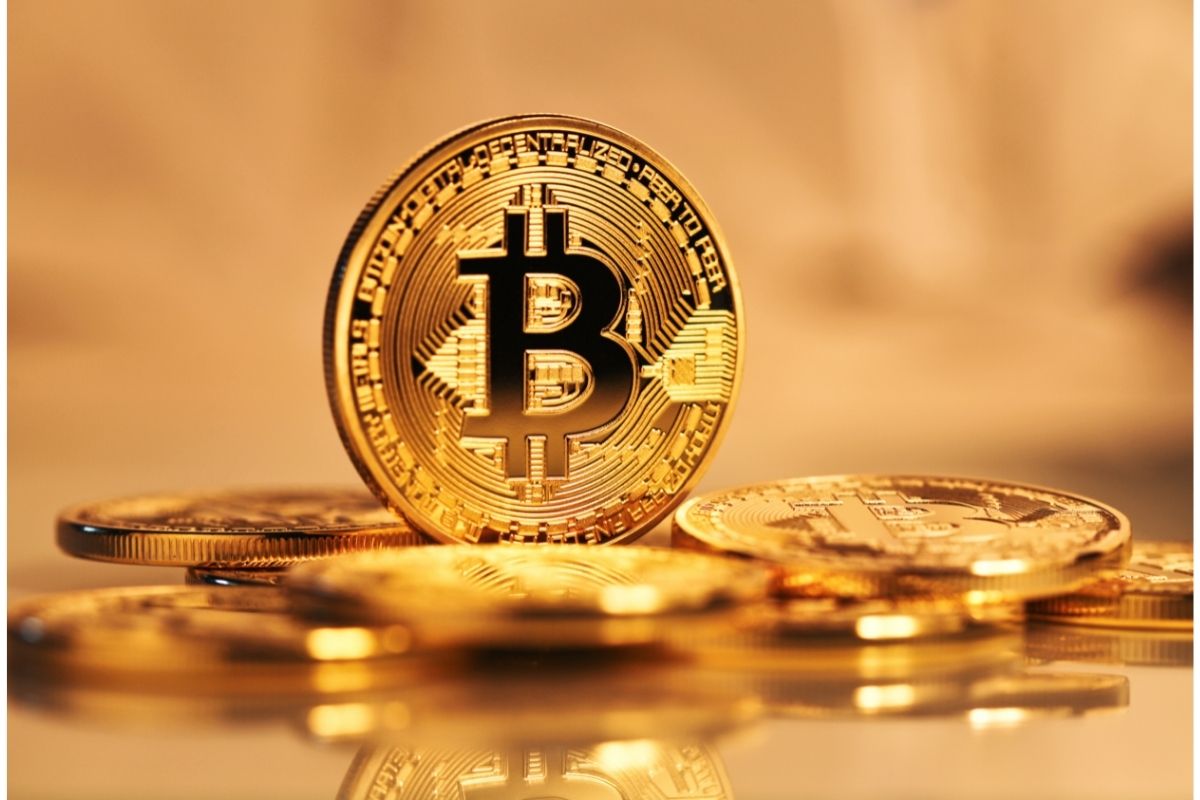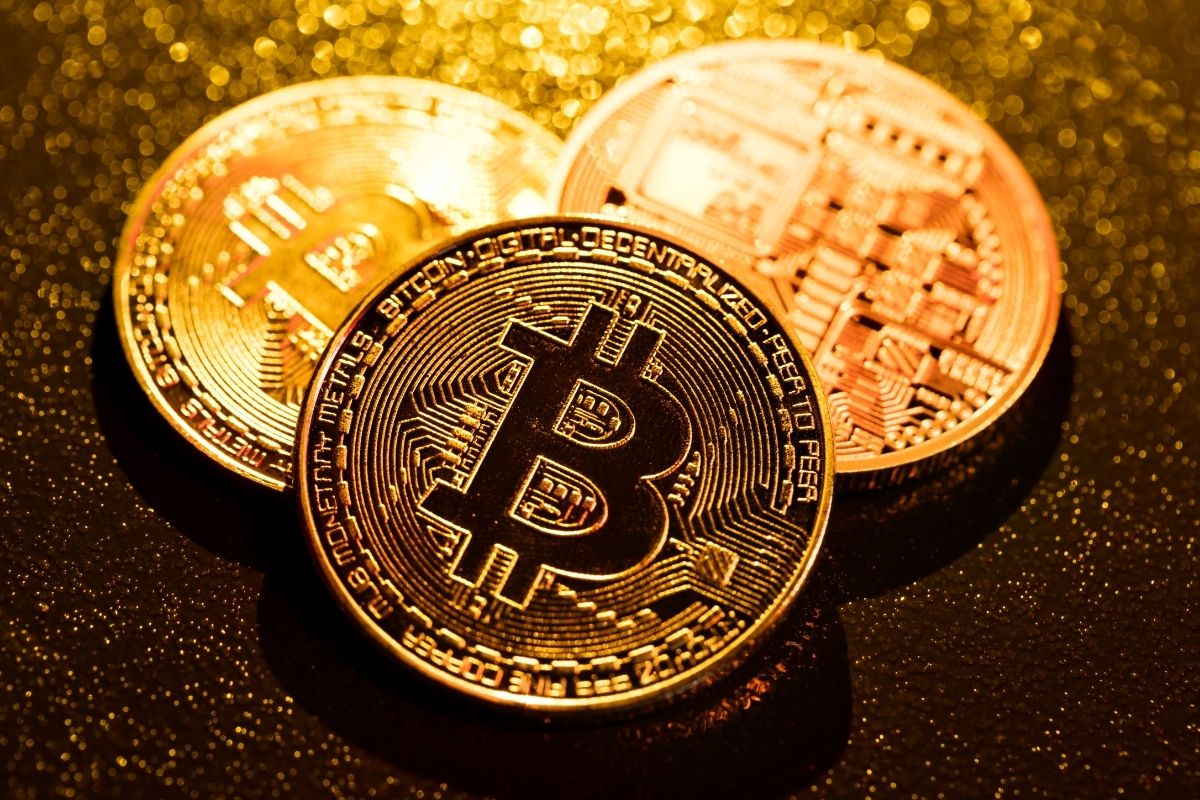Are you looking to trade Bitcoins but don’t know where to start? Maybe you have bought your first Bitcoin and don’t know what to do next?
Or are you curious and want to know more? Whatever your reason might be, we have the answer for you!

For many of us, Bitcoin is still new and we find ourselves unsure of how to navigate these online waters.
Everyone else seems to know what they are doing but is unwilling to share the information, leaving you in the dark and unsure how to proceed.
Well, no more! Today we are here with the answers that you need. Just keep reading to find out how you can trade Bitcoin and everything else you need to know!
What Is Bitcoin?
Bitcoin is a type of cryptocurrency that allows its users to send payments from one party to another without going through banks or other financial institutions.
The system was created by Satoshi Nakamoto in 2009.
Bitcoin has become very popular in recent years because of its potential to revolutionize global finance. In addition to being a form of payment, bitcoin can also be exchanged for goods and services.
How To Trade Bitcoin
The basic step-by-step instructions for trading Bitcoins are outlined below. To learn about trading Bitcoins in more detail, keep reading.
- Choose your crypto venue (Coinbase, FTX, Binance)
- Connect a payment option to fund the account (Bank account, credit, or debit card)
- Choose a strategy (it might be worth taking a cryptocurrency trading course to learn about the investment)
- Think about automated trading (auto platforms such as Coinrule)
How Do You Get Started With Bitcoin?
To start trading bitcoins, you’ll need to open an account at a bitcoin exchange. Once you’ve done that, you’ll want to choose a broker.
There are two main types of brokers: those who offer spot trades (i.e., buying and selling immediately) and those who offer futures contracts (i.e., long-term bets).
Each gives slightly different results. We recommend the latter if you’re looking to speculate on short-term trends, as you don’t have to worry about finding buyers when you sell your contract before it expires.
Once you’ve chosen a broker, you will then want to set up your margin requirements. This is similar to how stock traders borrow money from their brokerage accounts to buy shares of a company.
Your broker may demand a higher percentage of your funds than what you’d typically use when trading stocks.
This extra amount is known as your margin requirement. Typically, you won’t pay any fees for using borrowed funds, but you might be charged interest.
The maximum allowed margin varies among brokers. If you find the minimum too high, you should consider opening an account with a smaller broker.
You also shouldn’t automatically assume that all exchanges charge commissions. Check if there’s a fee associated with placing bids or offers.
As a rule of thumb, the larger and more established exchange is, the lower the commission rates tend to be.
Selecting An Asset Class
After you’ve opened your account, you’ll need to select an asset class. An “asset class” simply refers to a particular currency – like US dollars, Chinese yuan, Japanese yen, etc – so you can invest in them separately.
For example, you could opt to trade only Bitcoin rather than all currencies at once.
Trading in just one asset class means that you’ll have less exposure to market risks compared to investing across multiple sources simultaneously.
However, you’ll likely earn a lower return since you won’t benefit from the diversification benefits that come from having money invested in many assets at the same time.
Some people prefer to keep things simple by sticking to one asset class while others believe that diversifying exposure makes sense for long-term investors.
Whichever route you take, make sure that your strategy fits your risk tolerance. It pays off, in the long run, to invest conservatively.
Where Should You Get Bitcoins From?
Before you decide where to buy, you first must determine how much you’re willing to spend.
Since bitcoin is a digital currency without ties to traditional fiat currencies like the dollar or euro, you can purchase bitcoins cheaply online or even get them free.
Many people choose to place orders through online exchanges such as Coinbase, which allow them to buy bitcoins quickly.

When you first sign up for an exchange platform, you’ll receive a couple of confirmations. These confirmations include messages confirming your identity and transaction history.
This process can take a while, especially during peak hours when the website is receiving lots of traffic.
In some cases, they may require you to put in additional information to complete their verification process. They usually request this kind of information over email or a phone call.
It’s important to verify everything thoroughly in case they ask for anything unusual.
The second method would mean paying a certain amount of Bitcoins to someone else; essentially, giving away money in exchange for something of value.
Let’s say the person asking was offering goods worth around $50 in the form of electronic items.
That would leave you with $49 in your wallet – not exactly a pocket change! So where does the other half go? Back into the buyer’s wallet, of course! All transactions are based on trust, after all.
This second option is commonly used because it’s quite easy to sell coins online, which isn’t true for the first type of transaction.
Watching Bitcoin Trends
The easiest way to look at a price chart is mentally to create a graph of what is happening. Keep in mind that technical analysis is not 100% accurate, but it can give you clues about future price movements.
When we say there is a downtrend, we mean that prices are moving lower and making lower highs and low lows.
A good way to tell whether a trend is going up or down is to recognize a pattern of higher highs and higher lows.
These patterns occur when sellers meet buyers and supply meets demand.
Since MtGox started accepting deposits on February 28th, its total user base has exceeded 2 million accounts.
The number of addresses holding bitcoins at MtGox totaled close to 830,000 at the end of 2013, representing a quarter of all bitcoins held throughout the entire system.
By April 2014, trading activity had generated 606 million bitcoins, effectively doubling the size of the global bitcoin economy in about two months. At that point, trading accounted for about 70 percent of all bitcoin generation.
What Is Mining?
An ASIC (application-specific integrated circuit) mining chip is specialized hardware designed for mining cryptocurrencies.
As cryptocurrency mining becomes increasingly difficult, manufacturers develop faster, more power-efficient designs.
Indeed, both AMD and Nvidia have recently released graphics card BIOS updates that increase the Bitcoin hash rate. But regular GPUs can still be used to mine cryptocurrencies other than Bitcoin.
Mining is a record-keeping service done through cryptographic means. Miners keep the blockchain consistent, complete, and unalterable by recording transactions in a public distributed ledger called a blockchain.
They verify and timestamp transactions using cryptography, creating the underlying framework of the network.
For every transaction, miners will generate a block that contains many copies of the latest version of the blockchain.
Final Thoughts
Cryptocurrency exchanges offer a great deal of flexibility. You don’t need to buy them. You can simply use your bank account to make trades.
And if you’re looking for a highly secure alternative to paper currency that doesn’t depend on a government, then crypto trading may be just what you are looking for.
If you haven’t already figured it out though, getting started with crypto trading is more complicated than buying stocks – so start slow and learn as you go along.
There are many ways to get started, but before you invest any hard-earned cash, read reviews and talk to experts who’ve been there and seen it all.
Remember, investing is serious business and you deserve to know what you are doing.
Financial Disclaimer
This post contains sponsored advertising content. This content is for informational purposes only and not intended to be investing advice.
The investing information provided on this page is for educational purposes only. compundingstacks.com does not offer advisory or brokerage services, nor does it recommend or advise investors to buy or sell particular stocks or securities.
The owner(s) of this blog is compensated to provide opinion on products, services, websites, and other topics. The owner(s) may be compensated if you click on a provided link and purchase or sign up for a service. Any product claim or advice about a product or service should be verified with the manufacturer, provider, or party in question. Copyright Compounding Stacks © 2022
- Is Coinbase Safe For Beginners? - March 25, 2022
- Are Penny Stocks Good For Beginners? - March 25, 2022
- Why You Shouldn’t Save Your Money In A Bank? - March 25, 2022
